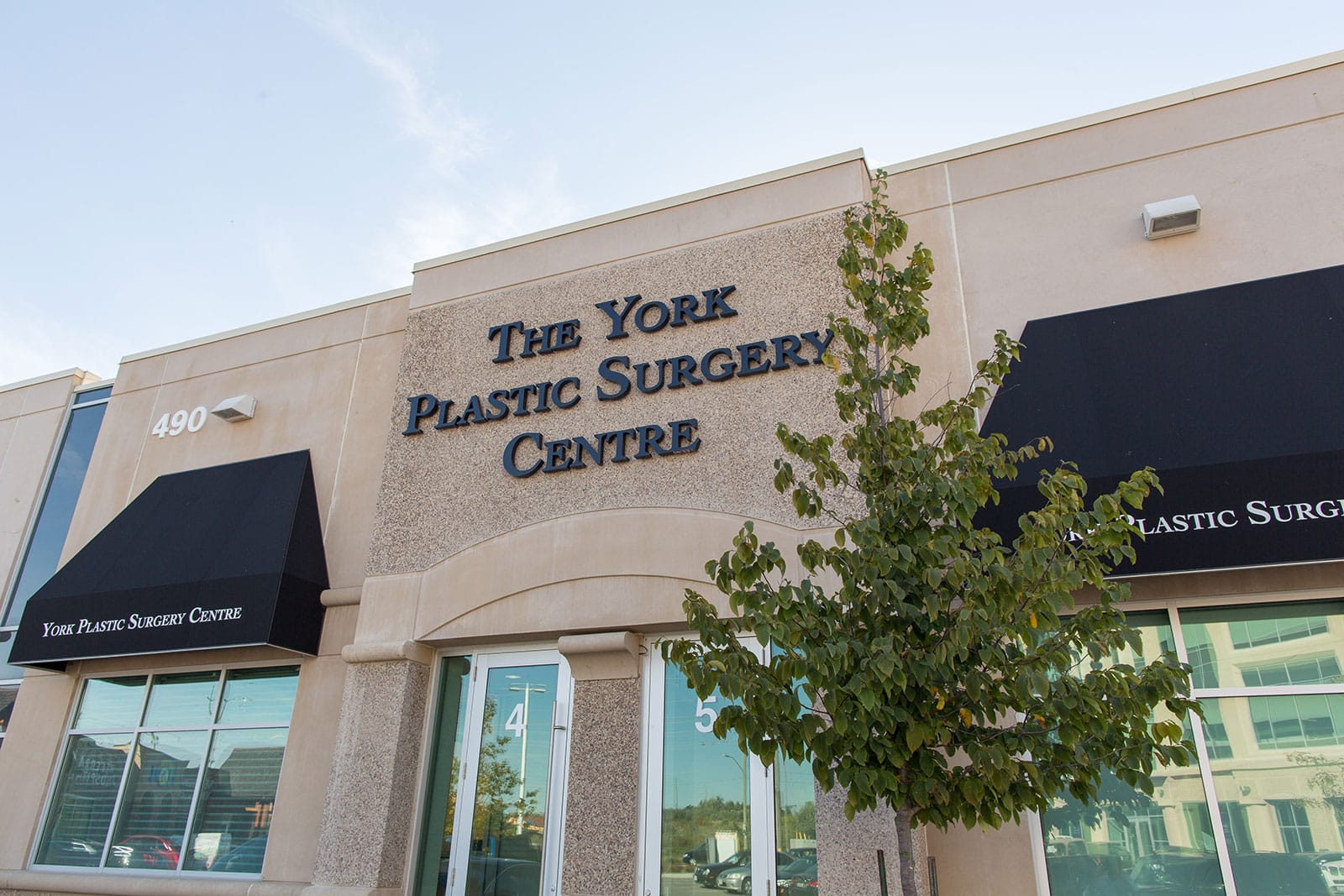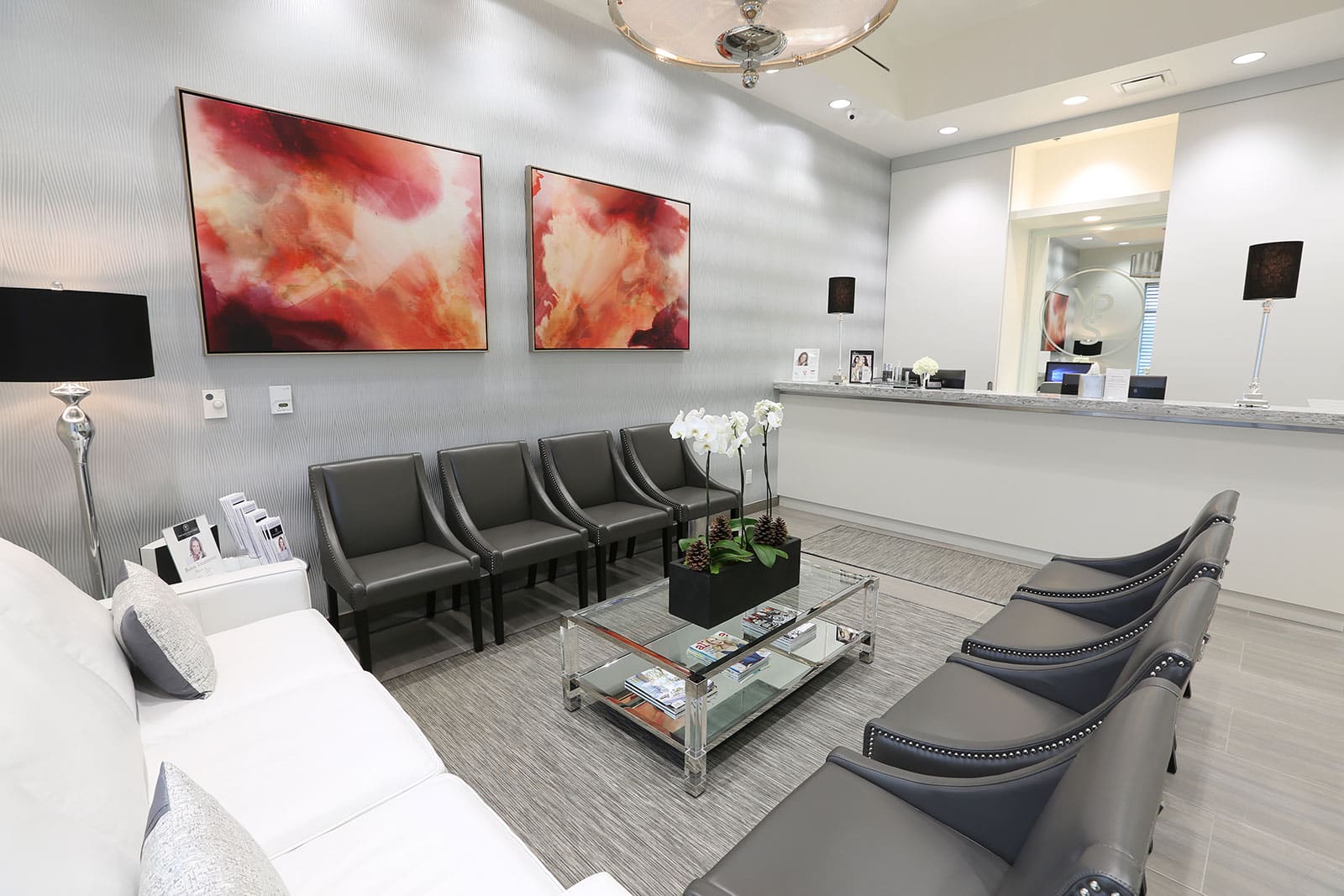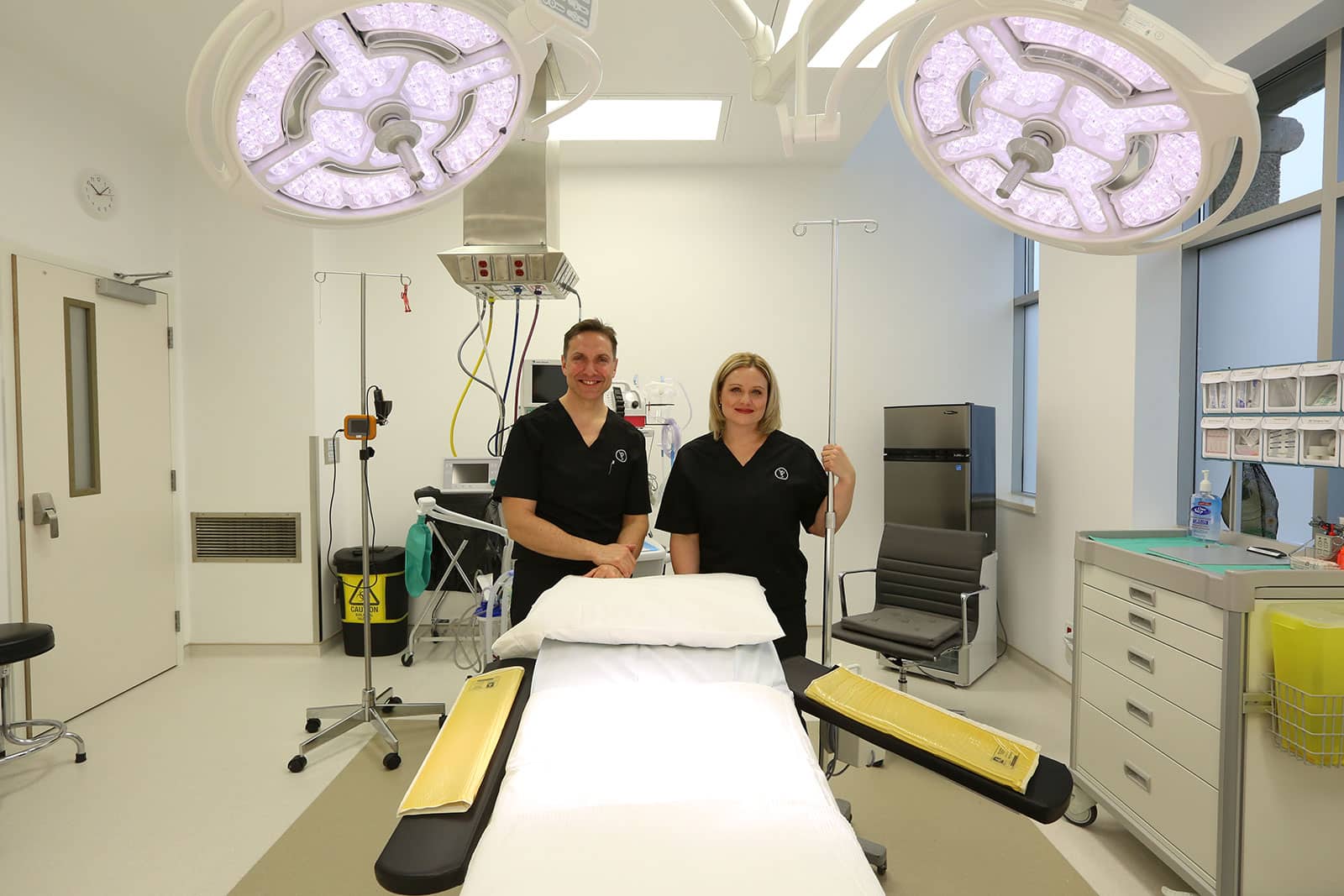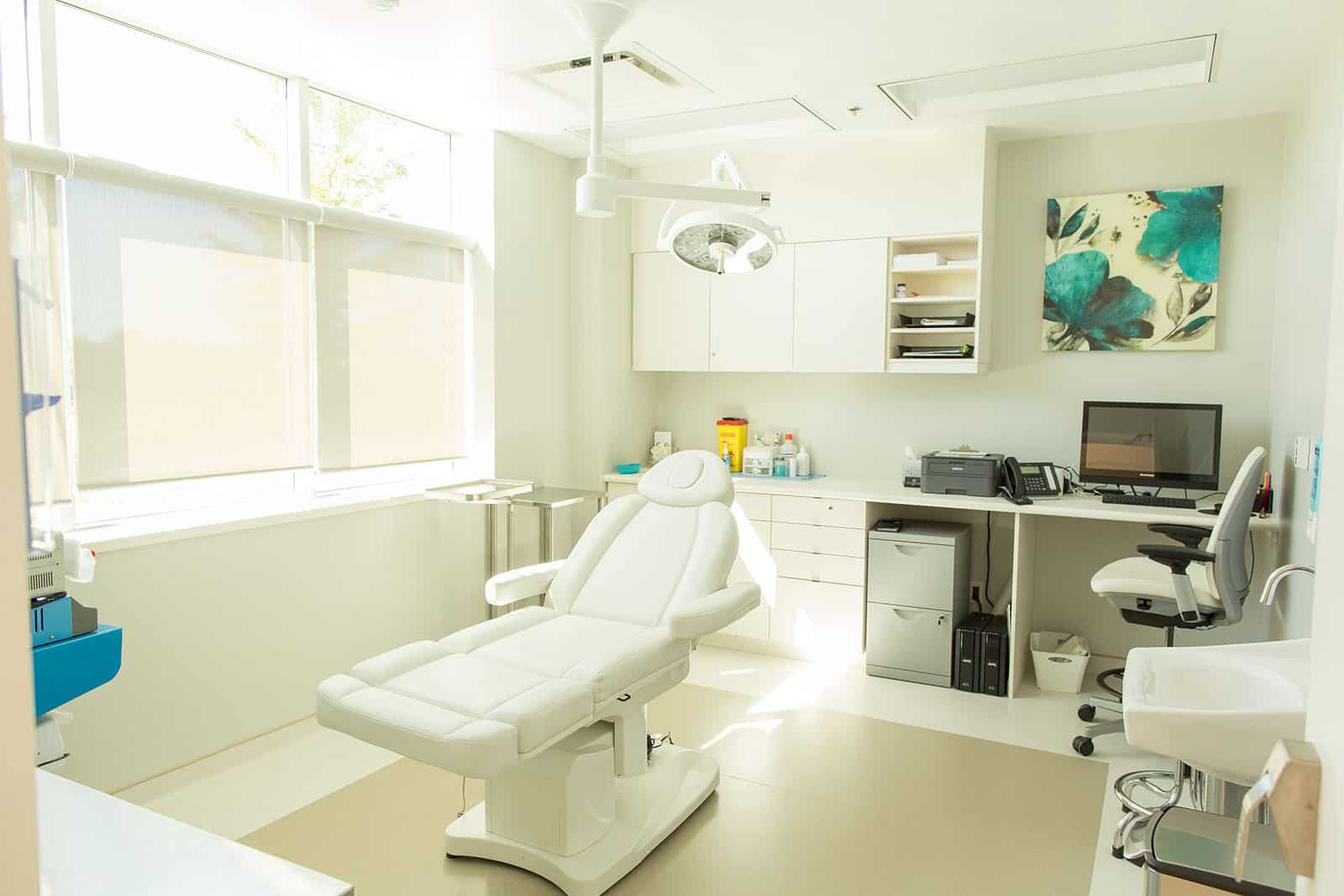Details of Breast Augmentation and Implant Procedures
Dr. Andrade is an experienced, highly trained board certified Plastic Surgeon (MD, PhD, FRCSC) who is a leader in breast and body contouring surgery. A trusted choice among referring doctors and health professionals, The York Plastic Surgery Centre offers a state of the art, professional and welcoming experience for all patient who come to the facility.
Consultation
Many people find it confusing to find the best implants for their body type. Dr. Andrade uses these steps to help you pick the best possible implant:
- Listen carefully to the person’s desired outcome. Often clients will bring photographs of other people who have their desired result.
- Thorough breast assessment taking into consideration dimensions, tissue thickness, skin tone, nipple position, chest shape, and overall body type.
- Trying on sizers: Dr. Andrade has a wide range of round an teardrop-shaped implants that patients can insert under a special unpadded surgical bra, thereby seeing the actual implants on their chest.
- 3D image technology to provide a virtual idea of how the appearance could change after breast augmentation.
There is no perfect way to predict or guarantee the final cup size after breast augmentation, but all of these techniques help a person to pick the best possible implants.
Choosing breast implants:
Implants available in Canada all have a silicone outer shell, but they are either filled with saline (salt water) or silicone gel. The silicone gel in different implants will vary in thickness; thicker gel has the consistency of a “gummy bear”. This gel tends to retain it shape more and is more likely to stay together if the implant ruptures. Some of the advantages of saline implants include lower cost, the ability to adjust the implant volume in the operating room, and insertion of the implant through a slightly smaller incision. However, disadvantages include a higher implant rupture rate and possibly a higher chance of seeing or feeling ripples in the shell of the implant.
Some advantages of silicone implants include a softer feel and decreased tendency to cause rippling. They also have a lower rupture rate. All silicone implants in Canada are filled with thick cohesive gel (that has the consistency of a “gummy bear”) so if they rupture the silicone has a lower risk of migrating elsewhere. Some disadvantages include increased cost, possibly higher contracture rate, and a longer incision on the breast. This is not a comprehensive description of the pros and cons of the different types of breast implants. Always base your decision in consultation with an experienced plastic surgeon.
Selecting round versus teardrop-shaped implants:
The shape of the breast implant is chosen based on each patient’s physical features, such as the amount of breast tissue covering the implant, and whether there is any breast sagging (ptosis) that requires correction. For example, if a person has no sagging and wants more upper breast fullness, a round gel implant is the most common choice. On the other hand, if the nipple position is lower on the breast mound, a teardrop implant is an option to help increase nipple projection and improve the apparent position of the nipple on the breast mound. This can improve the look of the breast without actually lifting the nipple. Note that teardrop implants all have a textured surface to prevent them from rotating and becoming malpositioned in the breasts. Textured implants are associated with a rare disease called anaplastic large cell lymphoma (BIA-ALCL), so certain types of textured implants are no longer sold in Canada (Biocell “macrotextured” implants).
Determining implant size:
The correct implant for a patient depends on their own preferences, their unique anatomy, and the surgeon’s recommendations. Patients can get an idea of their desired implant size by looking at preoperative and postoperative photos, talking to others who have had breast augmentation, or trying on breast implant sizers during their consultation. Dr. Andrade will also provide advice based on the patient’s anatomy including their breast dimensions and the amount of tissue covering the implant. The clinic also offers 3D breast imaging as an educational tool to help clients choose their implants. This system takes a 3 dimensional photograph of the person’s chest area and creates a virtual model into which different implants can be inserted.
Location of the Incision:
The 3 most common locations for the surgical incision are on the lower border of the breast (inframammary), around the edge of the areola (periareolar), and through the armpit (transaxillary). The inframammary incision allows the surgeon to see directly the implant pocket that is created, which means that the pocket can be created precisely and with minimal bleeding (so no drains are required). The inframammary incision also permits a unique technique called the dual plane implant pocket (see below). Some studies have shown a lower risk of capsular contracture when the inframammary incision is used. Dr. Andrade uses this approach for the vast majoity of patients.
The periareolar incision can disguise the scar around the pigmented edge of the nipple, but there may be altered nipple sensation, or potentially contamination of the breast implant by bacteria in the ducts deep to the nipple.
The transaxillary incision avoids a scar directly on the breast, although the scar in the armpit may be visible or wide, and it is more difficult to create a precise pocket or control bleeding through this incision.
Location of the Implant Within the Chest:

Submuscular placement (deep to pectoralis muscle)

Subglandular placement (superficial to pectoralis muscle)
The breast implant can be inserted in several positions deep to the breast.
- Submuscular pocket – the implant is inserted deep to the pectoralis muscle. This is also called a “subpectoral pocket”.
- Subglandular pocket – the implant is placed superficial to the pectoralis major muscle, under the breast gland. This is called a “prepectoral pocket”.
- Dual plane pocket – the upper part of the implant is covered by muscle but the lower part of the implant is under breast tissue. This is accomplished by separating the inferior part of the pectoralis muscle from the overlying breast tissue and the underlying ribs.
- Subfascial pocket – the implant is placed in a pocket just superficial to the pectoralis muscle fascia but just beneath the thin connective tissue layer (fascia) of this muscle. Proponents of this pocket feel that it provides slightly better coverage of the implant and has a more natural look than a subglandular pocket, but it does not disrupt the pectorals muscle like a subpectoral pocket. There is a lack of large studies comparing this pocket with others to determine if there is a significant advantage.
Dr. Andrade chooses the location of the implant based on the patient’s unique anatomy. For example, a patient with sagging or loose breast skin may have improved shape if the implant is inserted in a subglandular pocket. On the other hand, a patient with small breasts will have a thicker layer of tissue covering the implant if it is inserted in a subpectoral pocket. A dual plane pocket is a compromise between the two, providing more muscle coverage of the upper part of the implant, yet allowing the lower breast to expand. This improves lower breast projection and nipple position. These surgical considerations are discussed with patients before surgery. Please refer to the photo gallery – each case includes the implant size, type, and pocket position.
Preoperative Preparation:
Prior to any surgical procedure, a general physical examination by a family physician is recommended. Dr. Andrade is pleased to send a consultation letter to the family physician if the patient wishes to keep them informed of their operation. For healthy patients without medical conditions, routine preoperative blood tests and other tests usually do not need to be arranged prior to surgery (this is the recommendation of Choosing Wisely Canada). It is very important to inform Dr. Andrade about all medications, vitamins, and herbal supplements. Some of these substances can increase the risk of bleeding and must be stopped prior to surgery. Do not have anything to eat eight hours before surgery. However, clear fluids may be consumed up to 3hours before surgery such as water, apple juice, coffee without milk or Sprite. No soups, milk, orange juice or other cloudy fluids can be consumed. A special surgical bra will be provided. Dr. Andrade and a registered nurse will review all of these details prior to the operation.
Day of Surgery:
Breast augmentation surgery is performed under a general anesthetic, either in Dr. Andrade’s private facility in Newmarket, or at Southlake Regional Health Centre. The anesthetic is delivered by a board-certified Anaesthesiologist. The operation takes less than 2 hours but total time spent in the facility is approximately 4-5 hours.
Postoperative Recovery:
Patients are given a prescription for pain medications and a stool softener. Most patients are doing their own self-care and other their light activities the day after surgery, but Dr. Andrade recommends patients avoid heavy lifting or vigorous excercise involving the chest muscles for 4-6 weeks following surgery. The promise of a “24 hour recovery” after breast implant surgery is a marketing gimmick. There is no way to heal this quickly after any operation, otherwise all surgeons would adopt such a procedure. There may be bruising and the breasts will be quite firm for at least several weeks following surgery. The breasts will soften and the implants may settle for several months following surgery. Scars take at least 12 months to completely mature and soften.
Benefits and Risks of Surgery
The majority of patients are satisfied with the size and shape of their breasts following breast augmentation surgery, and the results will generally last for years. Potential problems immediately following breast augmentation surgery include but are not limited to bleeding, infection, wound healing problems, implant malposition, pain, or changes in breast sensation. Long-term problems include implant rupture, formation of scarlike tissue around the implant (capsular contracture), implant rippling, visible or symptomatic scars, and the need for additional surgery. Breast augmentation might affect the ability to breastfeed. Rarely, life-threatening complications can arise during or after any operation. Breast implants can affect mammogram screening and there is a very low yet increased risk of developing a rare form of lymphoma called anaplastic large cell lymphoma (ALCL). The US Food and Drug Administration (FDA) states that at the present time there is not sufficient evidence to show an association between silicone breast implants and rheumatoid arthritis or other connective tissue diseases. However, some studies have indicated that there could be a potential link. Dr. Andrade will discuss other specific risks and answer any questions during the consultation. This information is intended to complement the advice of a plastic surgeon obtained during a proper consultation, and it is by no means exhaustive or complete.
Common Questions About Breast Implant Procedures
Will my breast implants need to be replaced in the future?
Like any prosthetic device, breast implants might need to be replaced at some point. Reasons for implant replacement include rupture or deflation, shifting to an abnormal position, or capsular contracture. Other patients simply wish to have different-sized implants, or to have them removed for personal reasons.
What is the difference between a breast lift and a breast implant?
Breast lift surgery (mastopexy) reshapes the existing breast tissue and improves the position of the nipple on the breast mound. Patients who are good candidates for breast lift surgery are satisfied with the current size of their breasts but want to improve their shape and nipple position. Breast implant surgery increases the size of the breast, and also tends to provide more upper breast fullness than a lift alone can achieve. Patients who choose breast implant surgery wish to have a larger breast size. Some patients want to improve the shape and increase the size, in which case a combined implants plus breast lift operation can be performed (called augmentation-mastopexy).
What size of implants are required to increase a cup size for breast augmentation surgery?
There is no way to accurately predict a person’s final bra cup size based on the implants they choose. The final size depends on multiple factors including the person’s pre-existing breast shape and size, the size and shape of the implants, and the type of bra that is worn. One study showed that on average, it took an implant volume of 130-150cc to increase one bra cup size. However, they also showed that there was a large range from to increase a single cup size, from 75-300cc, depending on the bra company. The bottom line is, no surgeon can accurately inform their patient what final cup size they will be after surgery.
If I decide to have breast augmentation, how long will I have to wait for the operation?
The timing of surgery varies but often it is possible to have surgery within 2-6 weeks of booking the procedure.
How much time will I need off work?
Dr. Andrade recommends taking at least 1 week off work for patients with employment not involving heavy lifting (although some patients feel well enough to return to work after only 4-6 days). Those with more strenuous jobs, particularly involving heavy lifting or pushing, may require 3-4 weeks or more of light duties before returning to their regular work duties. You should never drive a car, operate machinery or go to work if you are taking narcotic pain medications.
How long will it take for the scars to fade?
Scars will begin to soften and fade within a few months of surgery, and they will continue to improve for at least a year. Dr. Andrade will provide scar treatments (silicone gel or sheets) to help fade the scars. Some patients ask about “scarless breast implants” that they have seen advertised. It is impossible to insert an implant without an incision, and skin incisions heal with a scar. However, the scars usually fade and become more difficult to see over time.
Are drains necessary for breast implant surgery?
There is no consensus amongst plastic surgeons whether drains should be inserted during breast augmentation surgery. Dr. Andrade does not use drains for the vast majority of his breast augmentation patients, because he has not observed a benefit in his practice. Bleeding during breast augmentation is usually minimal during Dr. Andrade’s procedure because he uses an inframammary incision and fiberoptic retractor to make the implant pocket. Any bleeding vessels can be seen and cauterized before the implants are inserted. For more extensive procedures such as breast reconstruction in which there might be more bleeding after surgery, Whether drains are used or not, there is always a small risk of bleeding after the operation (about 1% in Dr. Andrade’s experience).
What is breast implant capsular contracture? Can it be avoided?
Within a few weeks after breast implant surgery, a well-defined pocket forms around the implant, called a capsule. Normally the tissue layer of the capsule is very thin and pliable, and it can not be seen or felt. However, in some patients this capsule can become very thick and tight. This can distort the shape of the implant and the breast, and cause discomfort. The cause is not completely understood but potential contributors are bacterial contamination or foreign material like talc from surgical gloves or tiny fragments from surgical sponges. Dr. Andrade’s clinic takes multiple steps to try to decrease the potential causes of capsular contracture:
- Meticulous sterile technique in CPSO inspected facility
- Preoperative wiping of the chest by the patient, using antibacterial wipes
- Chlorhexidine-alcohol skin prep
- Implant insertion funnel – a device that enables the surgeon to insert the implant with minimal contact, lessening the risk of implant contamination
- Cover the nipple (with waterproof film dressing) during surgery to prevent exposure of the implants to bacteria that could be in the nipple ducts
- The surgical team uses talc-free gloves, & applies fresh gloves before opening implants to decrease contamination risk
- Prophylactic antibiotics
- Irrigation of the implant pocket with triple antibiotic solution or iodine solution, both of which are effective in decreasing bacteria
- Ensuring that the irrigation fluid for the implant pocket is not contaminated (for example, with cellulose fibres off the surgical sponges)
- Avoidance of wound drains in most cases since they could potentially allow bacteria to travel up the drain tube and reach the breast implant
- Closed saline breast implant filling system to miminize the risk of fluid contamination
- Use of antimicrobial sutures with an antibiotic impregnated into the suture material, making it less likely for the sutures to harbor bacteria
What is a breast implant funnel and why is it used for breast augmentation?
The Funnel is a lubricated, cone-shaped implant insertion sleeve that greatly simplifies insertion of a breast implant. In a nutshell, a large implant can be inserted into one end of the funnel, then squeezed through the much opening at the other end. This simple concept has several advantages:
- Smaller breast incision
- Shorter surgery time
- Less chance of permanently distorting the shape of the implant during the process of inserting it into the breast
- Less handling of the implant means less potential risk of contamination
The Funnel is a single-use device that adds to the cost of the procedure. Dr. Andrade believes that this extra cost is well worth the benefits to his clients.
Who is the best cosmetic surgeon to do my procedure? Who is the top plastic surgeon performing breast augmentation in the Newmarket, and the Greater Toronto Area?
These are common questions from patients seeking cosmetic surgery. The truth is that all fellowship-trained plastic surgeons in Canada have training in a wide variety of cosmetic and reconstructive operations. Finding the best plastic surgeon involves seeking a physician who has proper training to do the procedure you desire, and performs the operation routinely to maintain their skills. Other important aspects include the personality fit and interpersonal skills of the surgeon and office staff. Dr. Andrade is proud of the professionalism and friendliness of the entire office team. His state-of-the-art facility, The York Plastic Surgery Centre, has the latest design and safety features required by the CSA, CPSO, and Ontario Public Health. Many older facilities do not meet the same standards.
What is Dr. Andrade’s experience with cosmetic and reconstructive breast surgery?
Dr. Andrade has a major interest in plastic breast surgery. Regarding cosmetic breast surgery, he has the only CPSO inspected private plastic surgery facility in Newmarket and can offer more timely and discreet surgery to his patients. He has performed hundreds of breast operations including augmentation, lift, asymmetry correction, areola reduction, and inverted nipple correction. Since coming on staff at Southlake Regional Health Centre in 2005, Dr. Andrade was the first surgeon at the hospital to perform several operations including shorter scar breast reduction surgery (vertical breast reduction), immediate breast reconstruction using acellular dermal matrix, and fat transfer for breast contour improvement. All of these techniques can improve the aesthetic outcomes of surgery. Dr. Andrade works closely with other surgeons and cancer specialists to help patients with their breast care. He also assists patients with other chest problems such as tuberous breast deformity, Poland Syndrome and pectus excavatum.
Do I need implants alone, or implants plus a breast lift?
The answer to this questions depends on the position of the nipple on the breast mound, a detailed review with before and after photos can be found here: Breast Implants, Breast Lift or both?
Breast Augmentation
Breast Implant Profiles
Breast Implant Types
MODERN PRIVATE SURGICAL FACILITY
"Yorkville of the North"™
Conveniently located off highway 404 in Newmarket Ontario, The York Plastic Surgery Centre is a cosmetic surgical to facility that meets CPSO regulatory standards of safety, technology and patient care. Dr. Andrade is a trusted member of the healthcare community. Also, all of the medical staff that work at the facility include board certified anaesthesiologists and fully credentialed OR nurses.
Operations performed at the facility are done on an out-patient basis with in home nursing care as needed. Patients requiring more complex surgeries stay overnight at the hospital.
The entire staff at The York Plastic Surgery Centre work hard to make every patient feel welcome, comfortable and well informed.
Disclaimer: Images and videos on this page are models. See Dr. Andrade's photo gallery for hundreds of actual patient outcomes. It is not possible to guarantee a specific result because outcomes vary from patient to patient.







